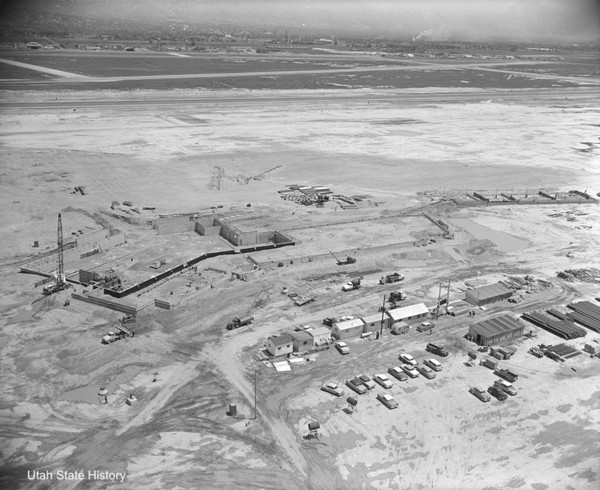Dublin Core
Title
Description
Love it or hate it – chances are, everyone who’s been to Salt Lake City has been to its airport. What we now call Salt Lake City International Airport has grown up alongside the city. Because of the rather unique geography of Utah’s capital, it has been easy for the airport to expand into the largely vacant land west of Salt Lake City’s downtown.
In 1911, a landing strip in an area called Basque Flats, located along the south shore of Great Salt Lake, hosted the Great International Aviation Carnival. The carnival presented an array of aerobatic stunt flyers and attracted 20,000 spectators. The Governor even debuted the new Utah state flag at the event. In 1920, the city purchased one hundred acres around the landing strip as an air field for planes carrying mail, and named it Woodward Field. By 1926, passengers were beginning to travel by airplane. Four years later, Woodward Field became Salt Lake City Municipal Airport, and the city built a second, gravel runway. When Woodward Field was 100 acres, it was rather large for the time, but the airport has since grown to 10,000 acres. Today, this broad campus includes office space, an 18-hole golf course, and even land for farming.
Because of its unique location on the edge of Great Salt Lake, the airport must manage its natural environment. The airport sits on a “zone of biotic transition” between the more solid soil to the east and the wetlands to the north and west. Because of this, the airport requires a system of pumps, canals, and drains to remain on solid ground. And because it sits in the path of millions of migratory birds, the airport has its own wildlife division to minimize damage in the interaction between people and our feathered friends.
Renamed the Salt Lake City International Airport in 1968, this facility has served as a hub for countless flights, ushering people in and out of the Salt Lake Valley. While the location has, remarkably, remained the same for over a hundred years, the latest renovations are but one step in the evolution of an institution.Creator
Source
_______________
See Charles S. Davey, “The Beginnings of Commercial Aviation,” Beehive History vol 8 (1982): 13-15; Salt Lake City Television, “History Minute: The Great International Aviation Carnival of 1911,” accessed Jan.25, 2023; Nancy Volmer, managing editor, “Air Mail Outpost to International Hub: The Salt Lake City Airport’s 100-Year Evolution” (Salt Lake City Department of Airports, 2020); Salt Lake City, “Airport History,” accessed Jan. 25, 2023.

